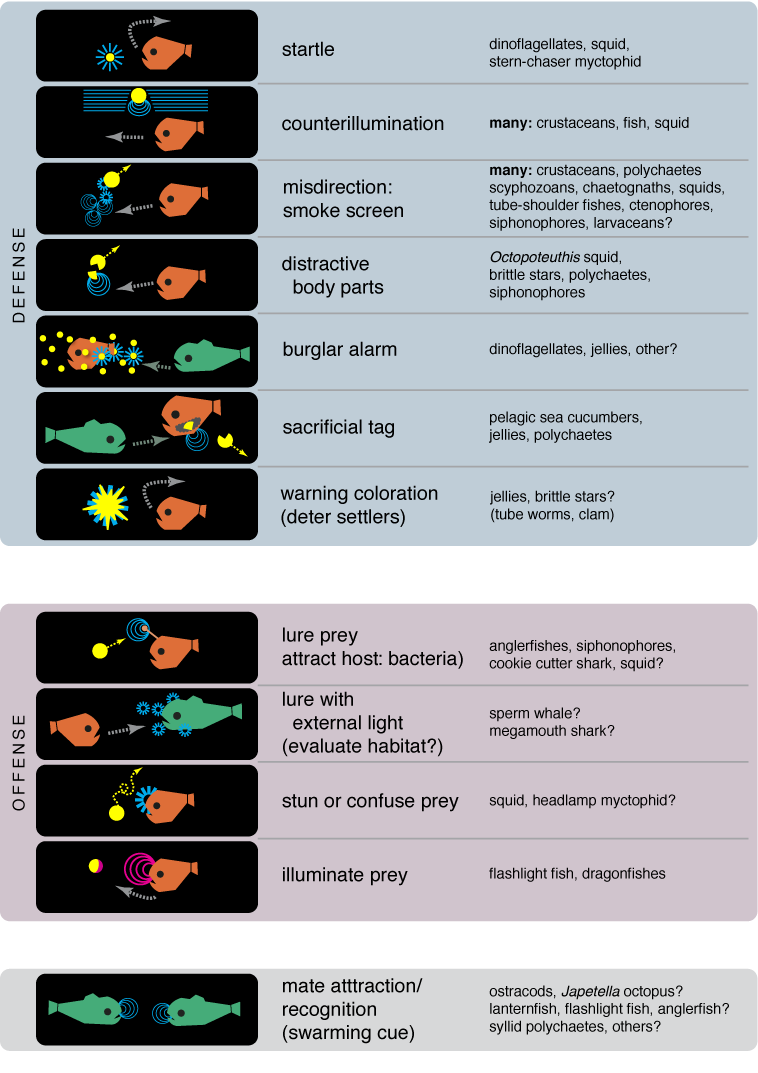Bioluminescence In Jellyfish
Biology 342 Fall 2010
Michelle Ichikawa
Bioluminescence In Jellyfish
Introduction
Bioluminescence, the ability to produce light, is a common feature among many marine animals, and is well represented in jellyfish. Jellies are free- swimming organisms that belong to the phylum Cnidaria, consisting of many different species, and the term also loosely encompasses the phylum Ctenophora, the comb jellies. Many jellyfish have the ability to bioluminescence, especially comb jellies, where more than 90% of planktonic species are known to produce light (Haddock and Case 1995). Arguably, the most famous of all bioluminescent invertebrates is the Aequorea victoria, which is the first species from which GFP was isolated, a discovery which went on to win the Nobel prize. Bioluminescence is used predominantly as a form of communication between animals, and can be used for defense, offense, and intraspecific communication. Many animals use bioluminescence in multiple ways, though jellyfish use it primarily for defense. It is important to note, however, that the different ways in which jellyfish use bioluminescence are still being discovered. This chart illustrates the many different ways in which marine mammals, including jellyfish, use bioluminescence.


Schematic Diagram displaying the methods in which many marine animals use bioluminescence. Haddock. et al 2010